Brighton’s misfortune this season is well-documented. ‘Pretty on the eye’, you will hear from the pundits, but it all means nothing if your attackers cannot finish, and your goalkeeper undergoes a dramatic dip in form. Injuries have not helped Brighton either, but almost every Premier League club has been suffering from players going down with the virus, or the more frequent muscle injuries this season.
Operating with a back three has been common this season, 88% of their games have started with a variant of the kind, and the rest of the league is filled with teams who use it as well. Just under half the league use a back three as their primary formation, see Arsenal and West Ham as just two prevalent examples. Although, recently, we have seen Brighton switch to back four in specific game scenarios that call for a change in tactics.
In this tactical analysis, we are going to take a look at what benefits switching to a back four will bring, it is potential drawbacks if used incorrectly, and some forecasts into the future. A focus of this piece will be an analysis of the recent Brighton vs Wolves game, which saw Graham Potter’s side start in a 3-4-3, before switching to a 4-4-2 in the second half.
Potter’s flexible setup: does switching to the 4-4-2 work?
Against Wolves, heading into the second half, Brighton were 3-1 down, with their only goal scorer heading down the tunnel with an injury. That goal scorer was Aaron Connolly, who looked sharp and Wolves were struggling to deal with him on and off the ball. He spearheaded a 3-4-2-1 formation, which would transform into more of a 3-4-1-2, with Leandro Trossard moving centrally into the #10 space, and Neal Maupay slotting to the left of Connolly to create a striking partnership in possession.
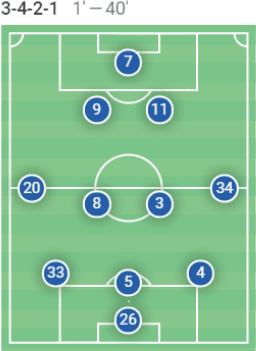
The problem in the first half was via the absence of Tariq Lamptey. His pace and directness was evidently missing, with a few occasions where Ben White would play the long ball down the right-wing, but Joël Veltman could not reach the ball in time, causing a goal kick, or throw-in. As we mentioned earlier, Trossard was only sporadically in those zones as he spent a lot his time in central areas, linking the midfield to attack.
Conceding three and losing their best player till that point, Potter made changes. Adama Traoré was causing Dan Burn massive issues in the first 45 minutes. Burn conceded both a penalty and an own goal by the 44th minute, and Adama found it quite easy to pick up the ball down the channel and run straight at him. Solly March was seldom providing the defensive support necessary, and as such, a switch to a back four was needed to include another defender.
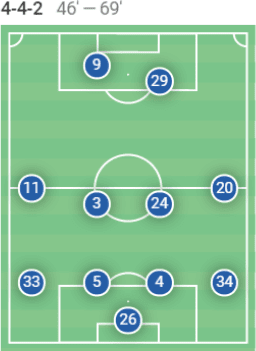
At the break, 21-year-old recruit Andi Zeqiri was brought on for the injured Connolly, and Davy Pröpper replaced Yves Bissouma, who seemed on his way to collecting a second yellow card, so Potter decided to take no risks and drag him off. This midfield paring, White and Pröpper made for an excellent combination, considering the circumstances they were in. Brighton needed to gain a foothold in this game with some dictated, vertical passing, which the pair provided with regularity.
Pröpper essentially changed the game for Brighton and turned the tides to the way of The Seagulls. After coming on, he completed the most progressive passes on the pitch, with seven in 45 minutes. He did an exemplar job in mid-game management, beginning his game by controlling the tempo, before attempting more risky passes as the match went on. With White next to him, he had more freedom to carry the ball forward too, completing 27 carries (63 yards in progressive distance) compared to White’s 34 carries (57 yards in progressive distance).
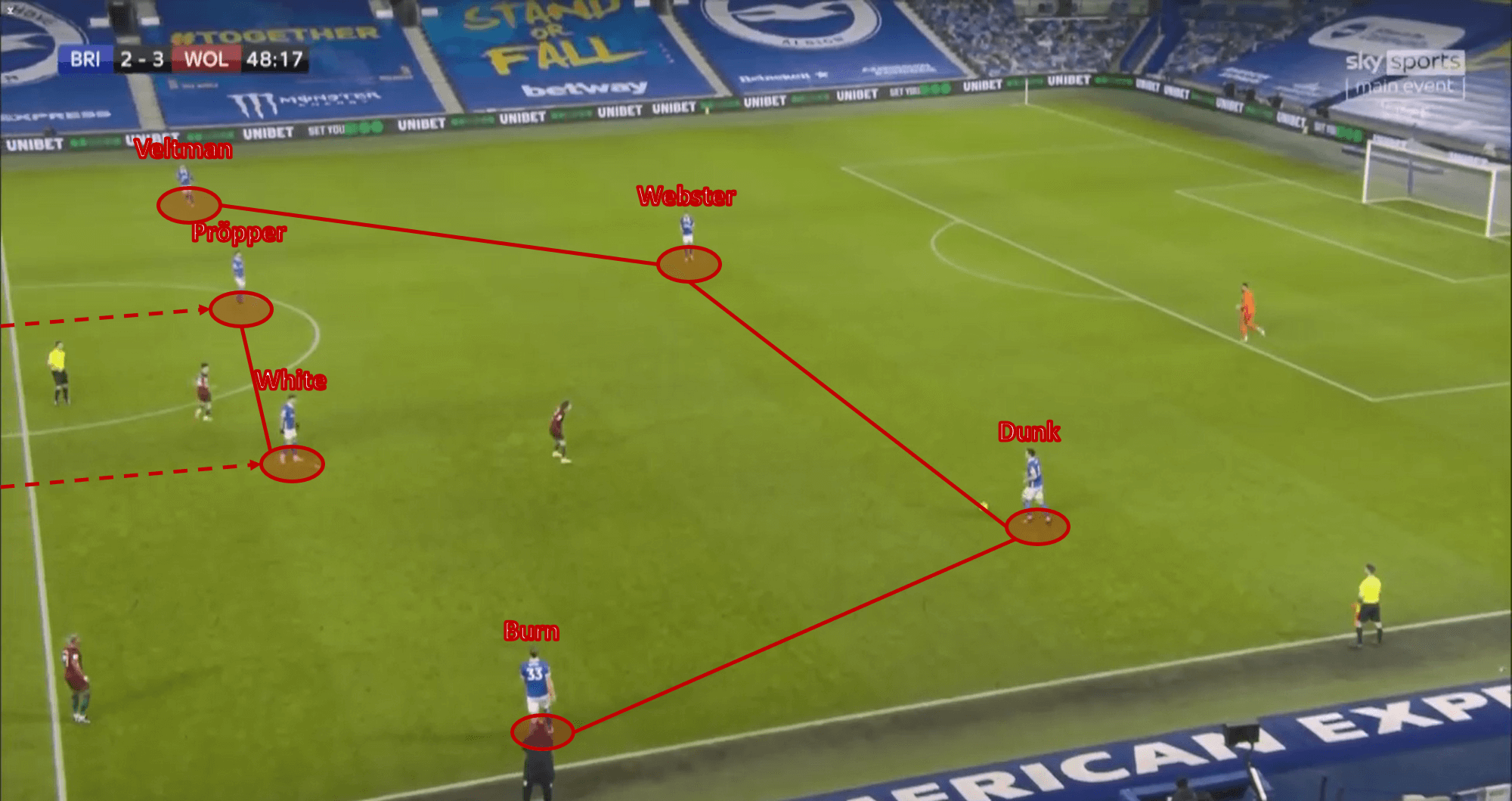
Here, we can see Brighton’s second-half 4-4-2 formation, with the two full-backs pushing higher, providing progressive passing options, and the two midfielders dropping deeper to create a platform for possession.
In their half, Brighton were outnumbering Wolves, nearly two to one. Nuno Espírito Santo would be happy to let this happen given their lead in the game, and Wolves’ preference to hit Brighton on the counter. Nuno would look to continue to utilise Adama’s direct dribbling ability in these counterattacking scenarios, pushing Brighton back, and causing pandemonium inside their penalty area.
In the second half, there was an issue with this approach. Due to Potter’s switch to a back four, Adama typically had two markers on him at all times whenever he received the ball, two markers who would look to force the Spaniard into football’s version of a cul-de-sac. This was further enforced when the adaptable White moved into left-back position, making for a nimbler and more physically-able marker. Trossard would also drop deeper and provide defensive support to aid Burn/White.
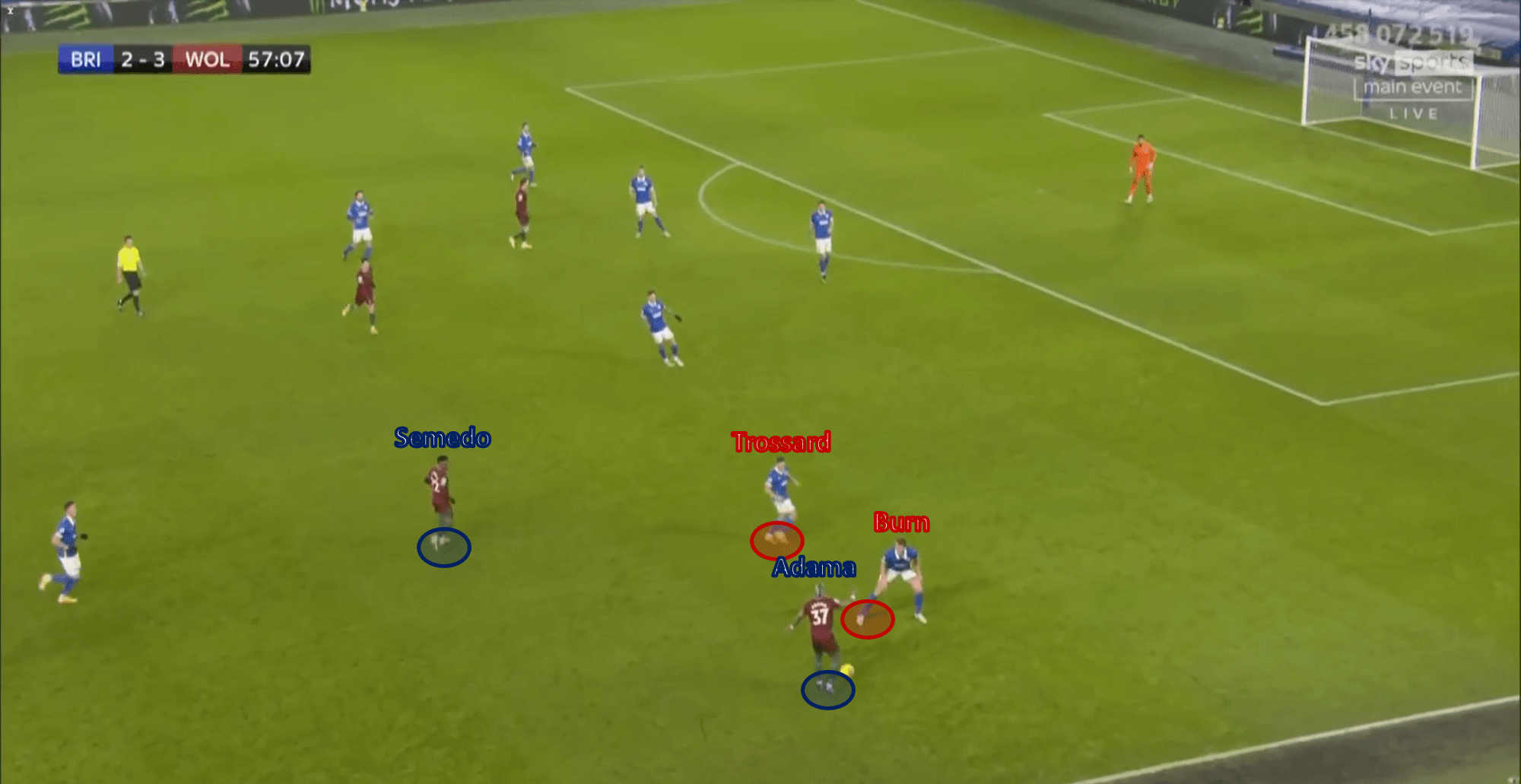
In a wide-right zone, Adama is on the ball, but he is limited in his options. Burn has the outside option covered, and in tandem with Trossard, he is cutting off Adama inside too.
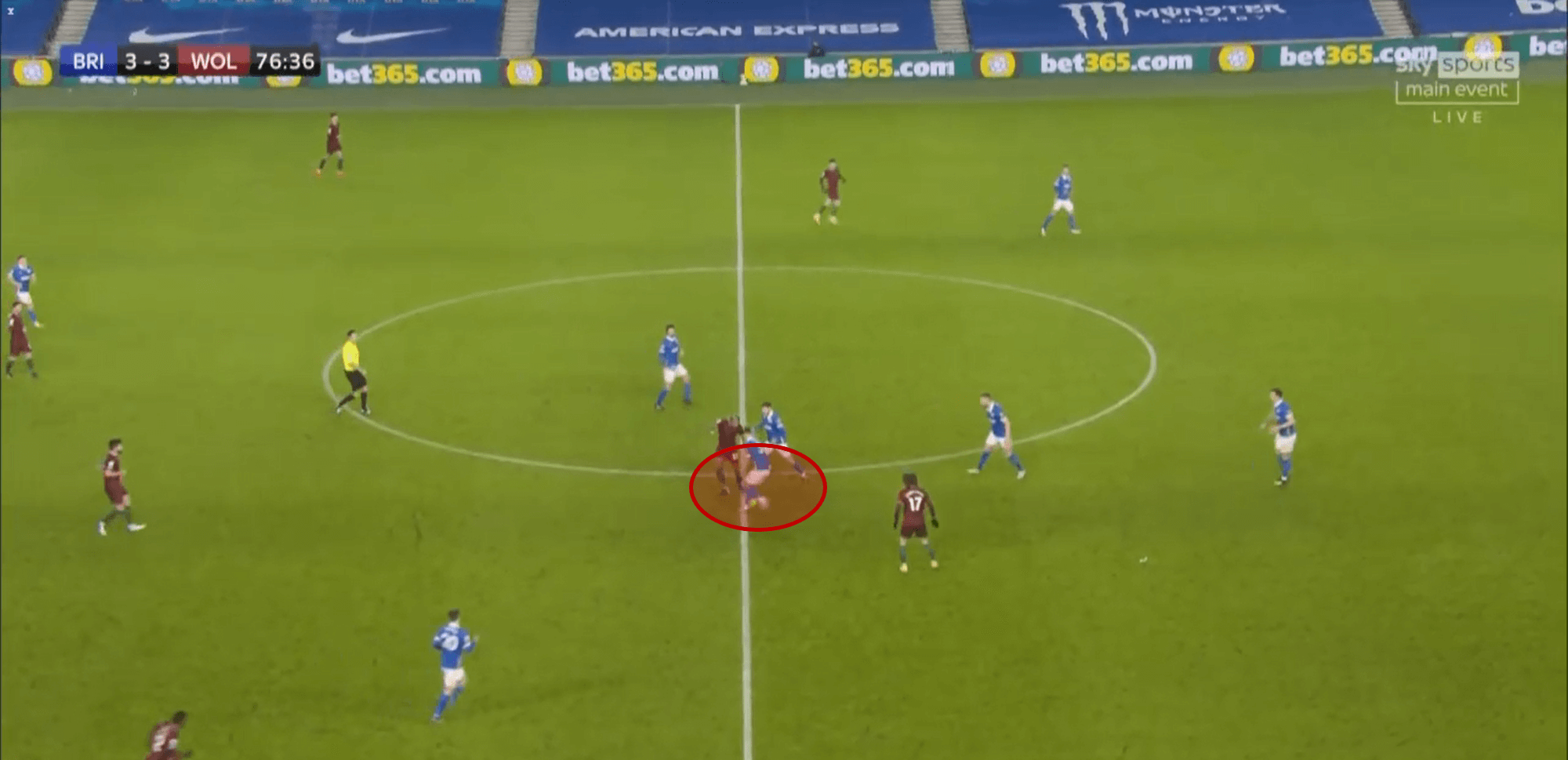
From a goal kick, Brighton have reacted to Adama picking up the ball in a central zone and immediately two players are engaged on his location.
This is much more than an isolated scenario. Potter has identified a key player and has ordered his players to double down on him. We see this at other clubs too, having one primary threat in the final third that the opposition has to deal with. Think Jack Grealish at Aston Villa, or Ademola Lookman at Fulham, stop these players in their tracks, and they typically have a difficult time creating chances.
Of course, at bigger clubs, there are numerous forwards of elite quality. Coming up against a side such as Manchester City or Liverpool, doubling down on one player will only open up space for another attack to enter and exploit. Adapting to your opposition is key, and Potter has shown he can be agile on several occasions, but there have been times where he has gotten it wrong.
Chance creation issues in a 4-4-2
Against Arsenal, Brighton began with a 4-4-2 formation, but it was limited in its success. Pröpper started as a right-midfielder, while Pascal Groß and Bissouma occupied the two central-midfield roles. Bernardo, to our surprise, started as the left-midfielder, which came across as a fairly negative approach against a team who had gained their confidence back in recent matches but were still nowhere near the level of a top side yet.
The trio of Maupay, Trossard, and Connolly all sat on the bench at the start of this one. One can only imagine in the spirit of team rotation, given the packed fixture list. Typically, a #10, Alexis Mac Allister started upfront with Alireza Jahanbaksh. Groß would actually push much higher in and out of possession, looking to make darting runs in behind once the ball was won back from another Brighton attacker.
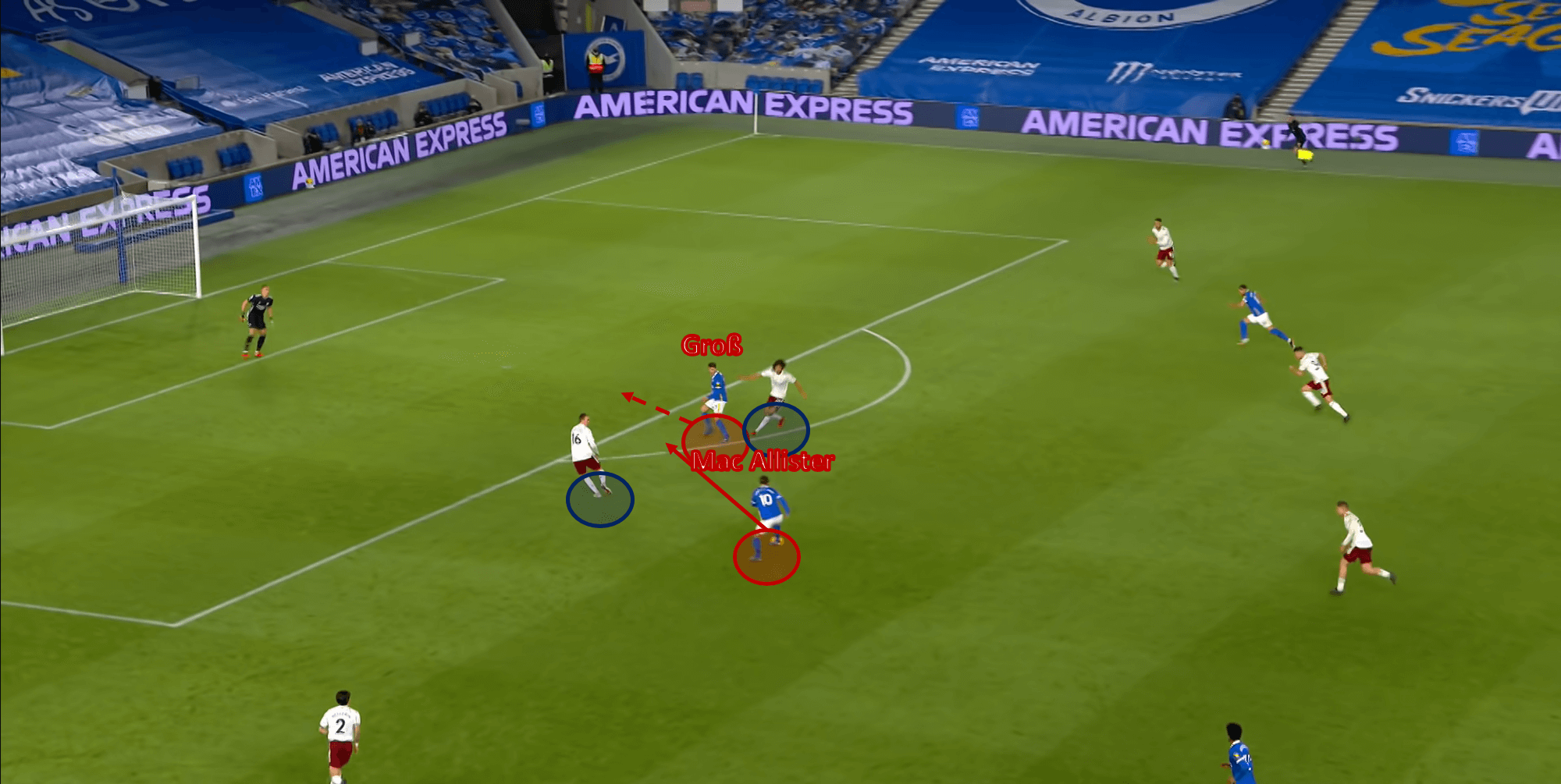
Groß can be found here making a darting run beyond Arsenal’s backline, with Mac Allister on the ball, ready to play the throug pass.
This was a genuine threat, to an extent, for a period. The issue was that Groß was the only runner that the team had since Mac Allister and Jahanbaksh preferred the ball into feet. This then heavily relied upon individual errors on Arsenal’s behalf, and while Mikel Arteta’s men have dropped some clangers this season, this cannot be a reliable game strategy.
There was also some decent chances carved from wide areas for Brighton too. Veltman’s passing ability came to the fore, but whenever he would send in a cross to a promising area, none of Brighton’s attackers had the anticipation to meet the ball. This could be because Brighton did not have a traditional #9 on the pitch, and you would believe that if it were Connolly or Maupay on the end of these deliveries, Brighton might have had a better chance of winning.
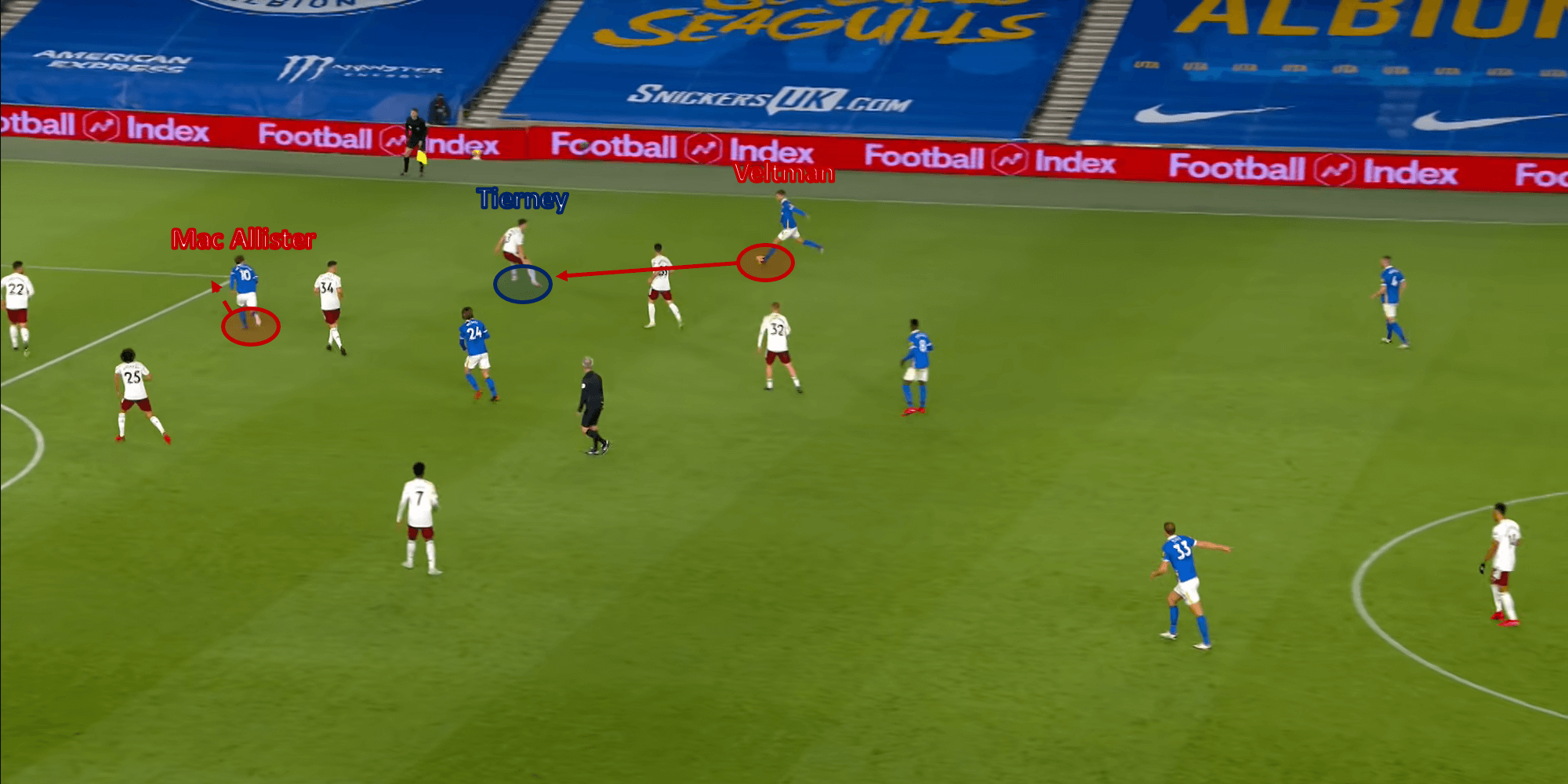
Veltman begins to play the early cross, with Mac Allister making the blindsided run on the outside.
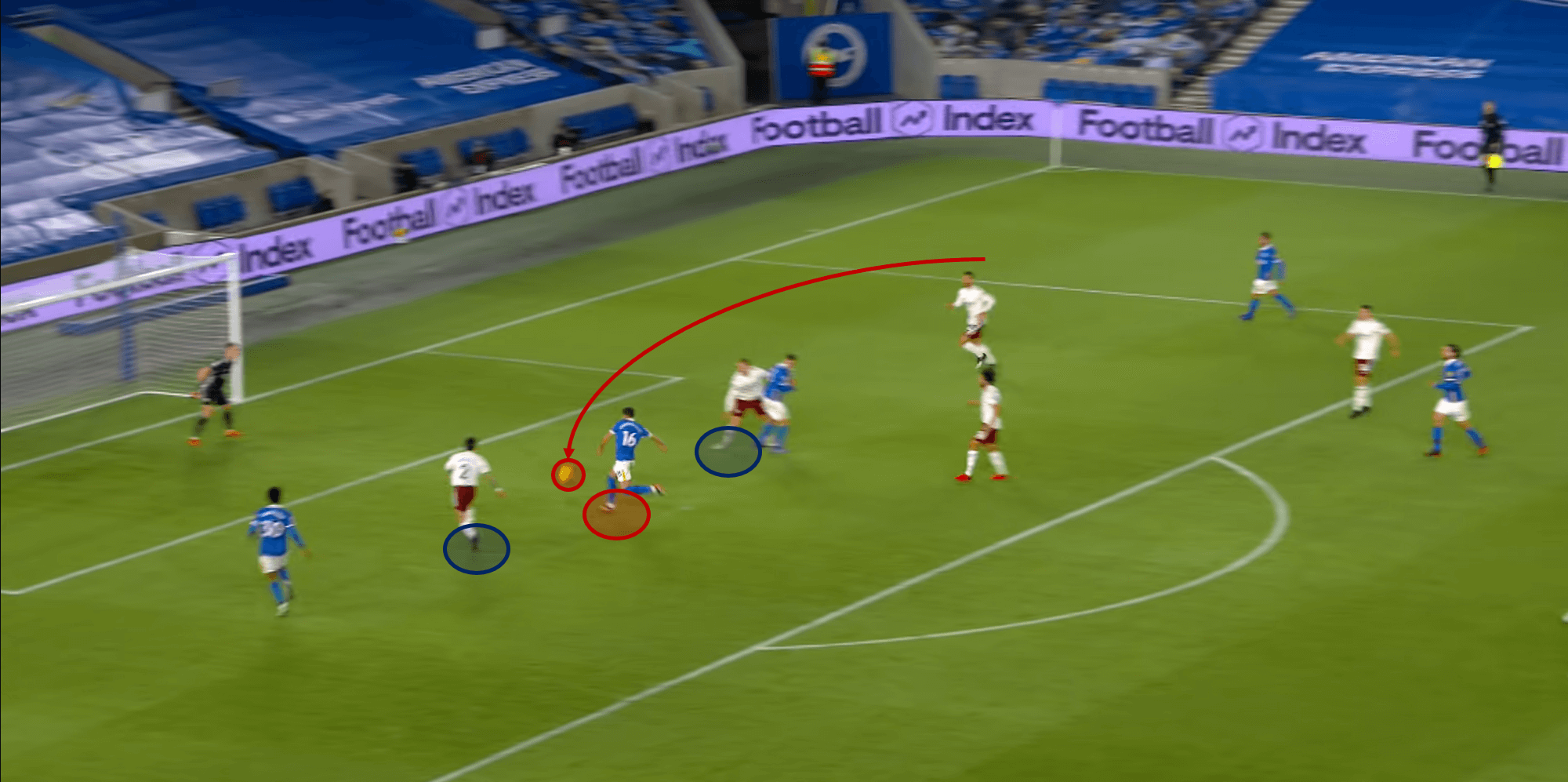
Eventually, the cross ends up in between two Arsenal defenders, just out of Jahanbaksh’s reach.
From this, we can understand that Veltman is arguably more suited to a back four system than a back three. This is useful to know since Lamptey has spent periods of this season out injured and will not be available for selection each game. Whipping in those early crosses to the likes of Maupay and Connolly could be a recipe for success, utilising the 4-4-2’s strengths, which is in its simplicity.
This does, however, limit Solly March’s impact on the other side of the field, who has been an engine for chance creation at times this season, especially early on in the season against Newcastle and Manchester United. March, in the last 18 months, has found his preferred position as a left wing-back, so switching to a back four is also removing one of the team’s most consistent attacking threats.
Defensive metrics: are Brighton just unlucky?
A lot has been made of Robert Sánchez’s introduction to the side, and rightly so. Mat Ryan made quite the poor start to the season, conceding 1.73 goals per 90, saving just 50% of the shots he faced, having a PSxG value of -3.2. This is a considerable drop off from his 68% save success rate and +3.5 PSxG value from last season. This has led to comments from Potter suggesting that Ryan has the freedom to leave the club if he so wishes.
Robert Sánchez has been an improvement so far if an unremarkable one. At just 23 years old, he has displayed some inconsistencies (especially dealing with aerial balls), but overall, he seems like a solid shot-stopper who has room to improve. His 63% save success rate is an improvement over Ryan, but still, nothing spectacular, while his +1.2 PSxG suggests he is saving more goals than xG would predict.
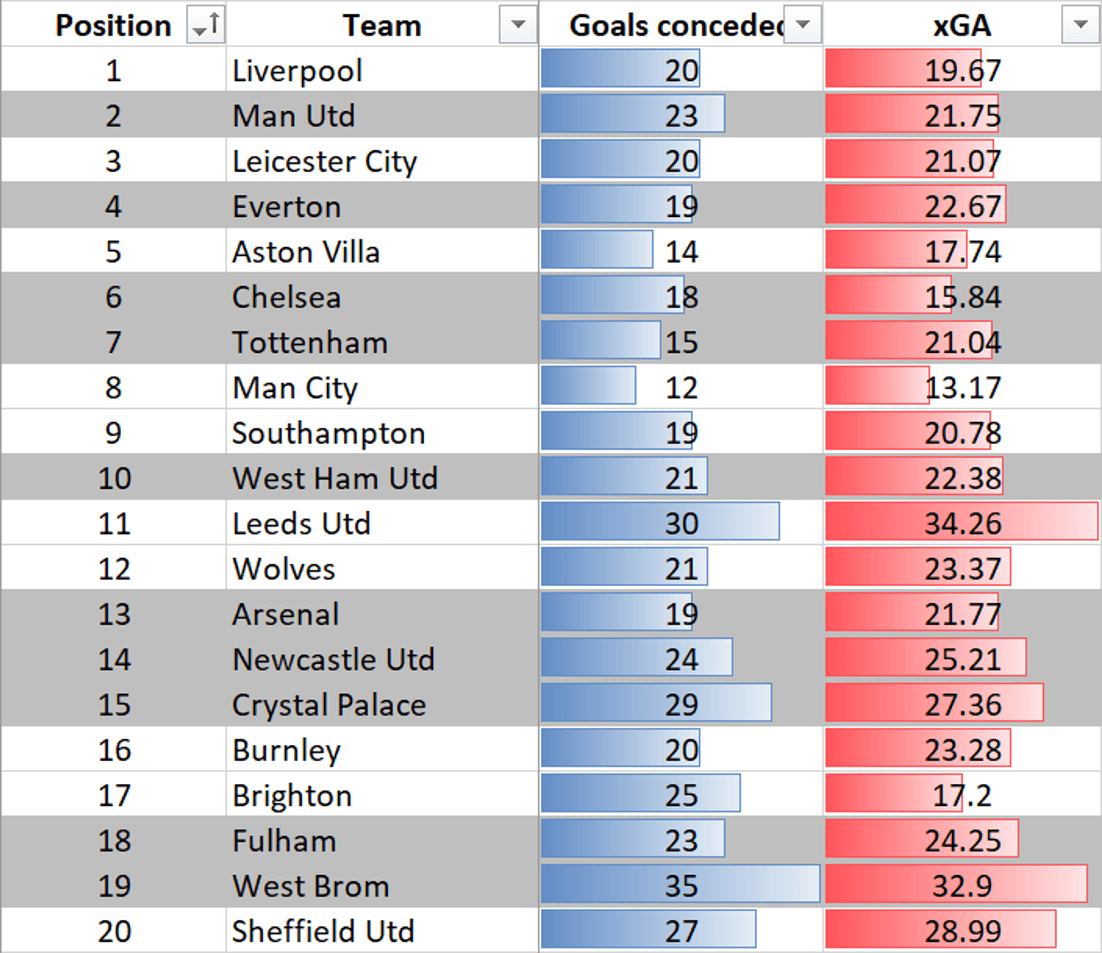
Overall, this has led to Brighton conceding the fifth-highest number of goals in the league, with 25 conceded, from the third-lowest xGA value in the league, with xGA stating their goals conceded should be closer to 17. This is a colossal underperformance, a mixture of bad luck, and very poor shot-stopping. However, can we dig a little deeper into the stats and discover where their issues may lie?
As we saw with Manchester City last season, maybe Brighton are just conceding a high amount of xG per shot, which could potentially skew the data in a negative sense. If this were the case, with Brighton conceding a low number of shots (which they do) but those shots are of a high value, then perhaps this underperformance would make more sense from a logical viewpoint.
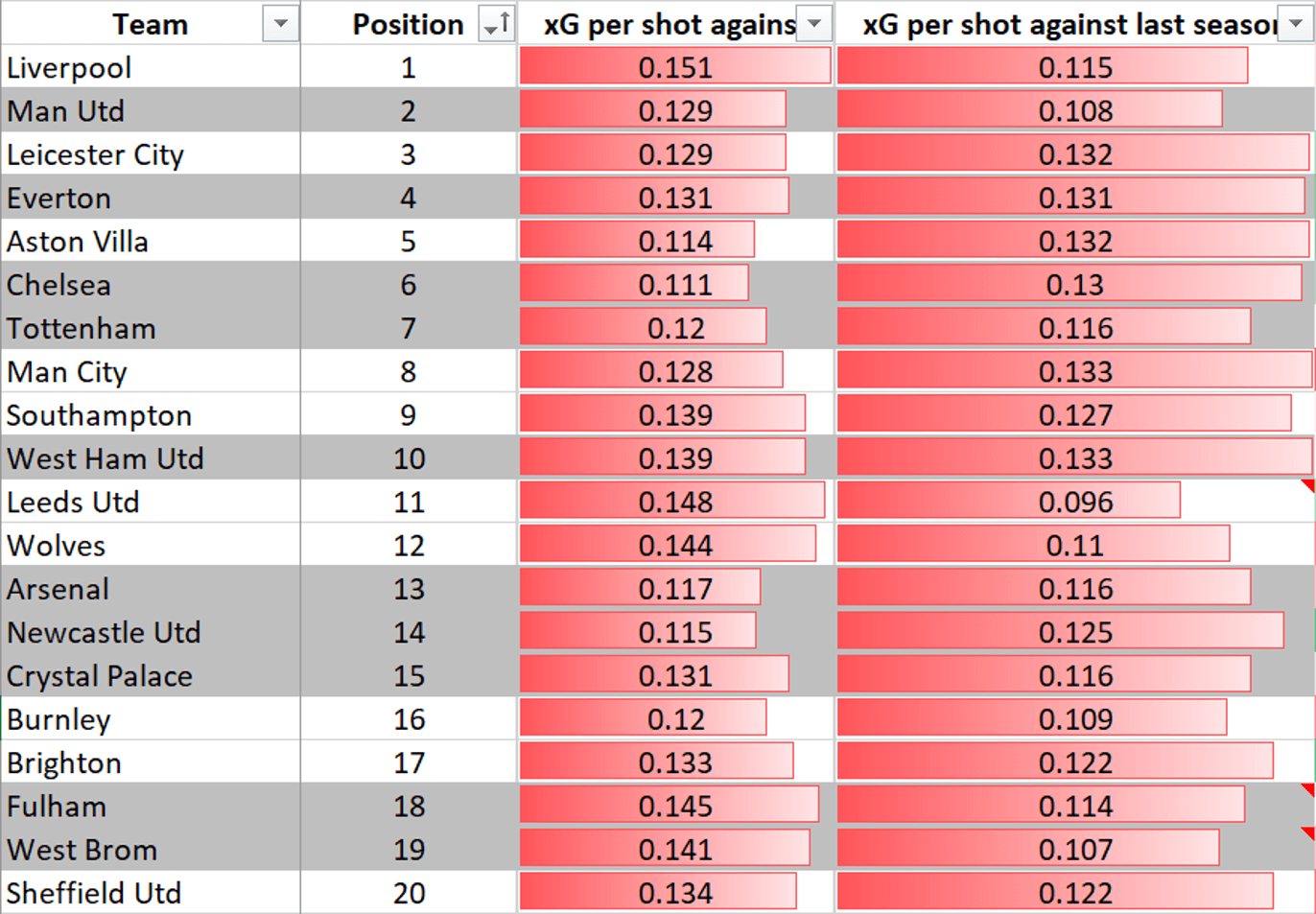
So, this is not particularly the case. Potter’s men rank ninth for xG per shot against per 90 with 0.133. This tells us what we can see when we have watched the games, Ryan was having a calamitous time. He conceded too many shots from outside the box, and as can be understood from a 6’1” goalkeeper, he struggled with balls in the air too.
Conclusion
At the moment, Brighton are projected to collect just 31 points at the end of a 38-game campaign. Somewhat unbelievably, xPoints would have Brighton down to have 27.2 points right now, some ways away from their actual total of 13. xPoints would therefore see Brighton as a third-place team in the Premier League. Unfortunately, underperformance at both ends of the pitch has seen them battling relegation in reality, rather than fighting for Champions League spots.
Looking forward, Brighton should continue to analyse their opposition and select formations based on their judgements. A 4-4-2 should leave them in good stead against tough opposition (or to gain a foothold on a game they are losing), while their typical 3-4-3 (or a variant of it) should win them enough points against teams around them in the table. If their forwards hit a hot streak, you could see Brighton pick up points at a hot pace and rise the table very quickly.





Comments